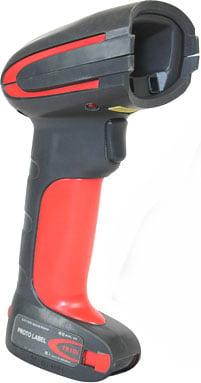Honeywell ESD
 You often hear manufacturers reference ESD when discussing scanners. In fact, on the Honeywell Granit datasheet you’ll see under the “Environmental” section on the back: ESD. ±20Kv air discharge, ±8KV contact discharge
You often hear manufacturers reference ESD when discussing scanners. In fact, on the Honeywell Granit datasheet you’ll see under the “Environmental” section on the back: ESD. ±20Kv air discharge, ±8KV contact discharge
What does it mean and why is it important?
- ESD – electrostatic discharge – is the sudden flow of electricity between two objects resulting from two conditions:
- Air Discharge. A high electrostatic field between two objects when they are in close proximity.
- Contact Discharge. Direct contact transfer of electricity between two objects at different potentials. This is similar to the above except you are injecting the shock directly into the computer. A typical example of this would be 20KV Air Discharge into a scanner vehicle mount. The mount in turn passes an 8KV shock to the scanner.
- Kv is a kilovolt – or 1,000 Volts. And a volt is…um…a unit of measurement to define voltage. Think of voltage, using a plumbing analogy, as water pressure.
ESD can damage electronics components such as integrated circuits.
So “ESD. ±20Kv air discharge, ±8KV contact discharge” tells folks that the Honeywell Granit can handle a jolt of electricity up to 20KV if generated from something in close proximity and 8KV if generated from something it “touches”. So yes, we’ve done the testing to verify that Honeywell Granit will hold up in dry static prone conditions.
So how does one test for ESD? An ESD gun of course.
It’s used to create static discharges (mini-lighting bolts) to all surfaces and openings on the unit.
Probably more info than you wanted. As a prize for reading the whole scanner blog I present the following info:
- Walking across a carpet can generate 1000V – 1500V (or 1KV to 1.5KV)
- Handling polyethylene bags can generate 1000V – 2000V
- Pouring polyurethane foam into a box can generate 1200V – 1500V




